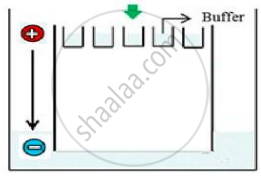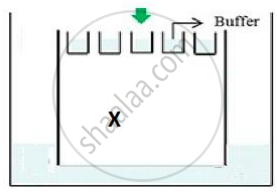Advertisements
Advertisements
प्रश्न
How does a restriction nuclease function? Explain
उत्तर
Restriction endonuclease functions by recognising its specific sequence. It binds to the DNA and cuts each to the two strands of the double helix at specific points in their sugar phosphate backbones. These enzymes cut the strand of DNA between the same two bases on the opposite strands leaving a single-stranded portion at their ends. These overhanging stretches are called sticky ends on each strand. The enzyme DNA ligase functions depending on the stickiness of these ends. For example, the restriction endonuclease EcoRI found in the colon bacteria E. coli recognises the base sequence GAATTC in the DNA duplex and cuts its strands between G and A.

APPEARS IN
संबंधित प्रश्न
Why is the enzyme cellulase needed for isolating genetic material from plant cells and not form the animal cells?
Mention the difference in the mode of action of exonuclease and endonuclease.
Collect 5 examples of palindromic DNA sequences. Better try to create a palindromic sequence by following base-pair rules.
How does restriction endonuclease function?
Answer the following question.
Explain the significance of palindromic nucleotide sequence in the formation of recombinant DNA.
The DNA fragment separated on an agarose gel can be visualized by staining with ______.
Restriction enzymes ______.
A mixture of fragmented DNA was electrophoresed in an agarose gel. After staining the gel with ethidium bromide, no DNA bands were observed. What could be the reason?
CTTAAG
GAATTC
- What are such sequences called? Name the enzyme used that recognizes such nucleotide sequences.
- What is their significance in biotechnology?
Carefully observe the given picture. A mixture of DNA with fragments ranging from 200 base pairs to 2500 base pairs was electrophoresed on agarose gel with the following arrangement.

(a) What result will be obtained on staining with ethidium bromide? Explain with reason.
(b) The above setup was modified and a band with 250 base pairs was obtained at X.

What change(s) were made to the previous design to obtain a band at X? Why did the band appear at position X?
